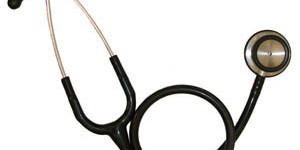Good Health and Well-Being, Second Grade Science Projects (28 results)
The United Nations Sustainable Development Goals (UNSDGs) are a blueprint to achieve a better and more sustainable future for all.
These projects explore topics key to Good Health and Well-Being: Ensure healthy lives and promote well-being for all at all ages.
These projects explore topics key to Good Health and Well-Being: Ensure healthy lives and promote well-being for all at all ages.
Science Buddies' second grade science projects are the perfect way for second grade students to have fun exploring science, technology, engineering, and math (STEM). Our second grade projects are written and tested by scientists and are specifically created for use by students in the second grade. Students can choose to follow the science experiment as written or put their own spin on the project.
For a personalized list of science projects, second graders can use the Science Buddies Topic Selection Wizard. The wizard asks students to respond to a series of simple statements and then uses their answers to recommend age-appropriate projects that fit their interests.
Let us help you find a science project that fits your interests, with our Topic Selection Wizard.|
Select a resource
Coding Projects
Sort by
|
Sometimes science can be really messy or use pretty disgusting ingredients. That is what it takes to understand how the world works, even if the experiment isn't pretty. Do you like chemical reactions that stink and ooze foamy bubbles? Do you think it sounds fun to make a super gross liver smoothie? Then this is the experiment for you!
Read more
All living things have DNA inside their cells. How do scientists extract the DNA from cells in order to study it? In this science experiment you can make your own DNA extraction kit from household chemicals and use it to extract DNA from strawberries.
Read more
New
How do you feel right now? Do you remember how you felt a few hours ago? How about yesterday or last Wednesday? What if you could track your emotions throughout the day and use this information to help improve your mood and well-being? In this science project, you will program a simple, pocket-sized device that you can carry around with you to log your feelings whenever you want or on a specific schedule.
Read more
Germs are everywhere! We try and clean our home with disinfectants, but do we really get rid of all the germs? Find out with this "hands-on" experiment.
Read more
How much iron is in your cereal? In this experiment, you will devise a way of testing foods for supplemental iron additives. Then you will use your design to test different breakfast cereals to see how much iron they contain. Which brand of cereal will have the most iron in it?
Read more
Did you know that our brains are split into two parts, right inside our head? One half is the left brain and the other half is the right brain. Some people use one half of the brain more than the other half when they are doing certain activities, like talking or reading. The half that is used is sometimes tied to which hand they prefer to use. If someone likes to use their right hand when doing an activity, like drawing or throwing a ball, do they also prefer to use their right ear, eye, or…
Read more
New
Are you ever annoyed by a poor Wi-Fi signal? What about when you try to send a text message, and it just won't go through because of poor cell service? Have you ever wondered what factors affect the strength of your signal and the speed of the connection? If so, this project is for you!
Read more
One of America's favorite snacks is potato chips. Although potato chips are very tasty, some varieties are not very healthy for you. A typical 1-ounce (oz.) serving of a well-known national potato chip brand contains 150 calories, 90 of which are from fat. How greasy are your favorite potato chips? Try this science fair project, and you'll get a visual understanding about how much oil a potato chip can hold.
Read more
What does the phrase, "Like a breath of fresh air," mean to you? This common phrase can have different meanings: calming, relaxing, invigorating, energizing or CLEAN! After all, you never hear anyone say, "Like a breath of dirty air," do you? Find out how clean the air is in this simple experiment.
Read more
Doctors use many complicated tools to check the health of patients. But you can make some medical tools at home—like a stethoscope! A doctor uses a stethoscope to listen to a patient's heart. In this science project, you will make three of your own homemade stethoscopes and figure out which stethoscope design works best and why.
Read more
Have you ever wondered how yogurt is made and what makes some yogurts different from other yogurts? You may have noticed that most yogurt containers advertise that the yogurt contains "live cultures." This means that there are living bacteria in the yogurt! These amazing bacteria can turn plain old milk into a yummy yogurt treat. In this science project, you will investigate whether the bacteria affect what the yogurt feels, tastes, and smells like by making your own yogurt at home!
Read more
Are you really picky about food? Or do you know someone who is? It might be because he or she is a supertaster! To supertasters, the flavors of foods are much stronger than to average tasters. Are you a supertaster? Find out with this tongue-based science fair project!
Read more
|
















